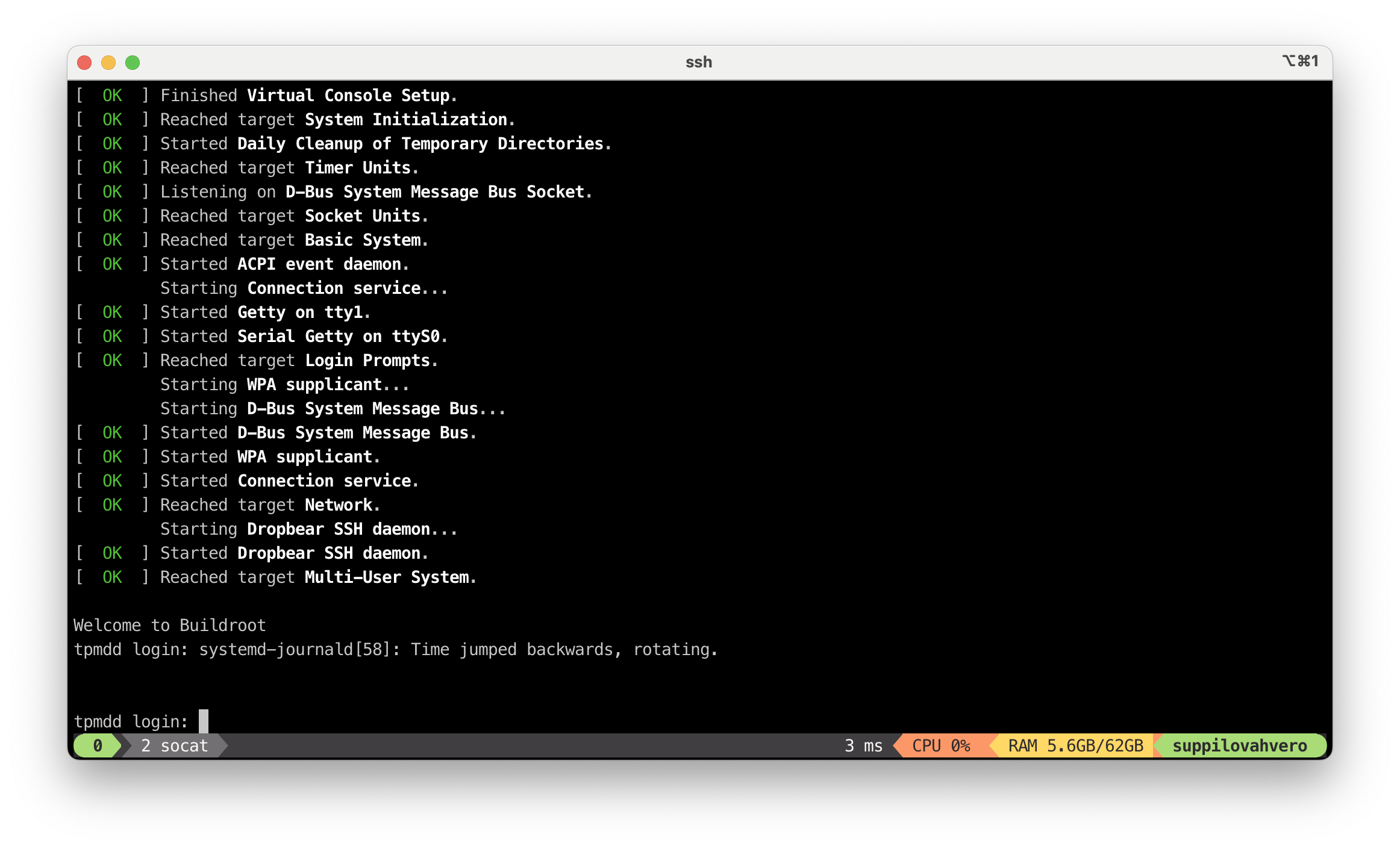Posts
4691Following
319Followers
484OpenPGP: 3AB05486C7752FE1
Jarkko Sakkinen
jarkkoAlso it is a huge benefit that I now generate a single img file that QEMU can host or I can burn it to USB stick and run tests on real hardware. So I guess I'm a happy systemd user then...
Jarkko Sakkinen
jarkkoI have no idea what "systemd-stub" even is (first time I'm hearing the word), but I guess in my use using systemd-boot could decrease the turn-over time in compilation by decreasing dependencies. I compile full operating system image from scratch when I do kernel development, not just kernel image, so decreasing that is already a benefit.
Jarkko Sakkinen
jarkkoJarkko Sakkinen
jarkkoJarkko Sakkinen
jarkkoJarkko Sakkinen
jarkkoJarkko Sakkinen
jarkkoMy #systemd feature awareness is always about two years old because you don’t become aware of its features by doing #kernel development :-)
For instance, I had no idea that systemd already natively supported #TPM2 before month or two ago someone told me about systemd-cryptenroll. I had seen the utility tho in some article but had a blind spot for the prefix.
Now that I’ve seen systemd’s TPM2 implementation in source level I can only say that it is somewhat bloated but I guess it is working fine :-) It is bloated because it would have been better idea just directly use the device. So not a great implementation, but at least a working one. That said, it is not a major glitch but IMHO could be rewritten at some point, with the motivation of decreasing dependencies and compilation times.
In order to address the 1-2 year turn-over issue, I’ll try to get my #BuildRoot build to generate a fully working #systemd environment.
Jarkko Sakkinen
jarkkoHowever, it boots into emergency mode. Any tips or ideas?
My end product is 2GB img file that can be booted either with real hardware or in QEMU (it has #UEFI layout).
Jarkko Sakkinen
jarkkoIn Fedora installation I did not have sockets correctly configured so I wrote a script, and also in Fedora I had to first time create scdaemon.conf.
So I expect this to work better than before :-)
Maybe I should make this a contribution to PGP maintainers guide with more verbose explanations?
Especially the part which sockets need to be on would be good to be there because it is not easy to know beforehand the correct configuration e.g. if you've never used gpg-agent.
Jarkko Sakkinen
jarkkoAnd also here: https://gitlab.com/jarkkojs/skeleton/-/blob/main/.local/bin/linux-reset-gpg-agent?ref_type=heads
Maybe noteworthy in the script is that there are two sockets that need to be enabled:
- ssh-agent.socket
- ssh-agent-ssh.socket
I've sometimes forgot to enable latter.
Jarkko Sakkinen
jarkkoMy lessons learned from #ethprague was these are the key algorithms:
- P256-K1 also known as the #bitcoin curve.
- Keccak-256, as it was before it became SHA-3. AFAIK, they have just some padding incompatibility. This is the hash used in #ethereum.
I don’t see really any problem make them a bit more “stack compatible”. So maybe something to look at after I get my TPM2 public key patch set into the mainline.
So like when running bunch of servers, how to seal your keys properly, pretty basic stuff.
Jarkko Sakkinen
jarkkoThat's it what I was trying to say.
Jarkko Sakkinen
jarkkoAnd someone might even want purposely want to leave the fortune after passing away through legit legal documents purposely. Legislation should really govern against this scenario proactively.

